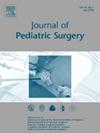Correlation of Genetic Mutation With Outcomes in Children With Hereditary Spherocytosis Undergoing Partial Splenectomy: A Multicentre Study
IF 2.4
2区 医学
Q1 PEDIATRICS
引用次数: 0
Abstract
Purpose
Hereditary Spherocytosis (HS) is a common genetic hematological disorder causing a life-long hemolytic anemia, with sequela of hemolysis. Children with severe HS commonly undergo partial or total splenectomy (PS, TS); PS confers the theoretical advantage of maintaining splenic immune function, but may be associated with regrowth, ongoing hemolysis, and need for completion splenectomy. HS can be caused by 5 different pathogenic gene variants. A rare and severe form is caused by homozygous/compound heterozygous mutations in the SPTA1 gene, coding for alpha spectrin. We hypothesized this form of HS is associated with worse outcomes following PS.
Methods
Following REB approval, a retrospective chart review of children with HS undergoing PS between 2000 and 2023 was conducted across 7 sites in the USA and Canada. Pre- and post-operative hematological values and need for completion splenectomy were analyzed. P < 0.05 was significant.
Results
Of 51 eligible patients, 10 had SPTA and 41 had non-SPTA1 HS. The SPTA1 group underwent PS at a younger age to non-SPTA1 (5.1 vs 9.6 yr, p = 0.003), and had lower pre-operative hemoglobin (86.2 vs 98.8 g/L, p = 0.04). There were no differences between groups regarding peri-operative surgical or hematological outcomes. The SPTA1 group required completion splenectomy at a higher rate than the non-SPTA1 group (70.0 % vs 24.4 %, p = 0.01).
Conclusion
Children with SPTA1 HS are more likely to require completion splenectomy following PS than children with other HS-causing mutations. These results support the role of genetic testing to permit an evidence-based individualized approach to patient selection for partial vs. total splenectomy.
Level of evidence
III.
求助全文
约1分钟内获得全文
求助全文
来源期刊
CiteScore
1.10
自引率
12.50%
发文量
569
审稿时长
38 days
期刊介绍:
The journal presents original contributions as well as a complete international abstracts section and other special departments to provide the most current source of information and references in pediatric surgery. The journal is based on the need to improve the surgical care of infants and children, not only through advances in physiology, pathology and surgical techniques, but also by attention to the unique emotional and physical needs of the young patient.

 求助内容:
求助内容: 应助结果提醒方式:
应助结果提醒方式:


